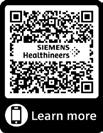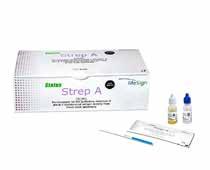Resources for You, Your Patients, & Your Practice
TOP 5 CRITERIA FOR CHOOSING A CHEMISTRY ANALYZER

The Crucial Role of Primary Care Physicians in Screening for Colorectal Cancer | 20
MDescapes: Dream Estate in Whitefish, Montana: The Ultimate Luxury Ski Retreat! | 32

Resilience + Passion

A Broad Range of Respiratory Point-of-Care Tests
We recognize your passion for providing high quality care to patients displaying symptoms associated with respiratory infections, and we appreciate your efforts and resiliency working to reduce the rapid spread of these infections.
We are committed to providing high quality, molecular and antigen point-of-care tests for detecting the most common respiratory infections, so you can get the answers fast and your patients back to doing what they love.
Like you, we understand there is a patient behind every answer—and that’s what matters most.

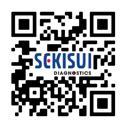


Getting the most from this guide
There are two simple ways to request information about the products and services found in Physicians Office Resource.
1. Go to www.PhysiciansOfficeResource.com and enter the four-digit reference number found next to the product or service into the search field, then request additional information, schedule a demo, or speak with a sales agent all with just a simple click of a button.
2. Find the Business Reply Card in this issue, circle the desired reference numbers, complete the form, and drop into any USPS mailbox. A representative will contact you as quickly as possible to answer your questions.
PUBLISHED BY Medical Education Resources, LLC
PUBLISHER
Aaron R. Medaris amedaris@physiciansofficeresource.com
CEO
Andrew C. Nimmo acnimmo@physiciansofficeresource.com
PRESIDENT
John D. Pasquale jpasquale@pharmaconnect.com
BUSINESS MANAGER
Marci J. Hills mhills@physiciansofficeresource.com
TRAVEL EDITOR
Brandi L. Brower
EDITORIAL BOARD
Shakeel Ahmed, MD
Barry Craig, MLT (NCA), CLC
STAFF WRITER
Dylan J. Chadwick
CREATIVE DIRECTOR PRODUCTION MANAGER
Jessica Elmer
Copyright ©2025
To continue your free subscription of Physicians Office Resource magazine, please fill out the Business Reply Card (BRC) located within this magazine and drop in any United States Post Office mailbox.
If you are a manufacturer of medical products or provide services to medical professionals and would like to advertise your products or services to the nation’s top physicians doing in-office testing, call 801-380-6094 or visit: POR.io for more information.

TOP 5 CRITERIA FOR CHOOSING A CHEMISTRY ANALYZER
Choosing the right chemistry analyzer is a critical decision that impacts workflow efficiency, patient care, and overall laboratory performance. With many options available, selecting the best one requires careful consideration of multiple factors. Explore this article to learn more about the most important criteria when selecting a chemistry analyzer for your POL.

The Crucial Role of Primary Care Physicians in Screening for Colorectal Cancer
Colorectal cancer (CRC) is the third most common cancer diagnosed in both men and women and remains a leading cause of cancer-related deaths worldwide. Early detection through screening significantly improves prognosis and reduces mortality.
MDescapes: Dream Estate in Whitefish, Montana: The Ultimate Luxury Ski Retreat!
Located just steps away from Whitefish Mountain Resort, this sprawling luxury estate offers the best of both worlds—unparalleled access to world-class skiing and the comfort of an opulent mountain retreat.


Electrolytes can now run just like other chemistries. Avoid extra cost and maintenance associated with ISE.

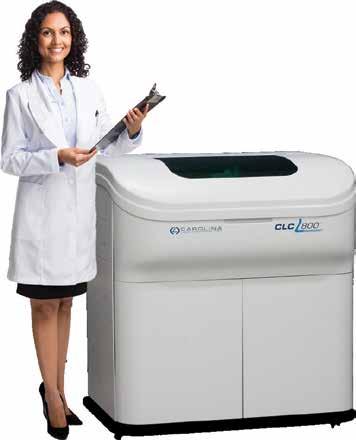

TOP 5 CRITERIA FOR CHOOSING A CHEMISTRY ANALYZER FOR A PHYSICIAN’S OFFICE LABORATORY
BY MICHAEL BAKER, PHYSICIANS OFFICE RESOURCE STAFF WRITER
In a physician’s office laboratory (POL), having a reliable and efficient chemistry analyzer is essential for providing timely and accurate diagnostic results. These instruments play a crucial role in analyzing blood, serum, plasma, urine, and other biological fluids to measure various chemical components, such as glucose, electrolytes, lipids, enzymes, and proteins.
Choosing the right chemistry analyzer is a critical decision that impacts workflow efficiency, patient care, and overall laboratory performance. With many options available, selecting the best one requires careful consideration of multiple factors. Below are the top five criteria to consider when selecting a chemistry analyzer for a physician’s office laboratory.
1. Accuracy and Precision of Test Results
The primary purpose of a chemistry analyzer is to provide accurate and precise test results that aid in diagnosing and monitoring patients. Accuracy refers to how close the test results are to the true value, while precision refers to the consistency of results when repeated tests are performed.
Factors Affecting Accuracy and Precision
• Analyzer Technology: Some analyzers use dry chemistry, while others use wet chemistry methods. Wet chemistry tends to be more accurate but requires liquid reagents.
• Calibration and Quality Control: A high-quality analyzer should offer automated calibration and built-in quality control checks to minimize errors.
• Reagent Quality: The quality of reagents significantly affects test results. Some analyzers use proprietary re agents that enhance accuracy.
• Interference Minimization: Advanced analyzers incorporate features to minimize interference from lipemia, hemolysis, and icterus, ensuring more reliable results.
Why This Matters
Inaccurate test results can lead to misdiagnosis, incorrect treatments, and potential harm to patients. Physicians rely on chemistry analyzers to make critical decisions, so investing in a device with superior analytical performance is essential.
2. Test Menu and Customization Options
Every physician’s office laboratory has specific testing needs based on the patient population, medical specialty, and practice focus. The chemistry analyzer should offer a comprehensive test menu that aligns with the laboratory’s requirements.
Key Considerations
• Basic vs. Advanced Panels: Some analyzers offer only basic metabolic and lipid panels, while others include advanced markers such as cardiac enzymes, liver function tests, and thyroid hormones.
• Customization and Expandability: Some analyzers allow labs to add or remove specific tests, providing flexibility as testing needs evolve.
• Throughput and Efficiency: Consider how many tests the analyzer can perform per hour. A POL with high patient volume will need an instrument with faster turnaround times.
Examples of Commonly Performed Tests
• Basic Metabolic Panel (BMP)
• Comprehensive Metabolic Panel (CMP)
• Liver Function Tests (LFTs)
• Lipid Profile
• Renal Function Tests
• Cardiac Markers (e.g., Troponin, CK-MB)
• Thyroid Function Tests (T3, T4, TSH)
• Electrolytes (Sodium, Potassium, Chloride, Bicarbonate)
Why This Matters
A broad and flexible test menu ensures that the POL can meet current and future testing demands. Selecting an analyzer with a limited test menu may require sending additional tests to external laboratories, increasing costs and turnaround time.
3. Ease of Use and Automation Features
Since many physician’s office laboratories are staffed by medical assistants, nurses, or general practitioners rather than specialized laboratory technicians, ease of use is a crucial factor when selecting a chemistry analyzer.
Automation Features to Look For
• User-Friendly Interface: Touchscreen displays, intuitive software, and guided workflows simplify operations.
• Automated Sample Handling: Features such as barcode scanning, automatic dilution, and clot detection reduce manual workload.
• Minimal Maintenance: Some analyzers require daily or weekly maintenance, while others are designed with self-cleaning mechanisms.
• Preloaded Reagents and Cartridges: Eliminates the need for manual reagent preparation, reducing the risk of errors.
• Onboard Storage of Reagents and Consumables: Reduces the frequency of reagent replacement, increasing efficiency.
Training and Support
Even with automation, proper training is essential. Manufacturers that offer training programs, online resources, and responsive customer support can help ensure smooth operation and minimize downtime.
Why This Matters
A complex, difficult-to-use analyzer can lead to errors, inefficiencies, and frustration among staff. An intuitive, automated system improves productivity and reduces the likelihood of human error, leading to better patient outcomes.
4. Speed and Throughput Capacity
The speed at which an analyzer processes samples is a
crucial factor for maintaining an efficient workflow in a physician’s office laboratory. Laboratories with high patient volumes need analyzers that can deliver rapid results without compromising accuracy.
Throughput Considerations
• Low Throughput (Less than 50 tests/hour): Suitable for small offices with low patient volume.
• Medium Throughput (50–200 tests/hour): Ideal for moderately busy POLs.
• High Throughput (200+ tests/hour): Needed for high-volume practices.
Turnaround Time (TAT)
• STAT Testing: Some analyzers offer STAT (immediate) testing capabilities, delivering results in minutes.
• Batch vs. Random-Access Processing: Batch analyzers process multiple samples at once but may have delays between batches. Random-access analyzers can run tests as needed without waiting for a batch.
Why This Matters
Fast, efficient analyzers improve patient care by reducing wait times and enabling same-day diagnosis. If an analyzer is too slow, physicians may have to delay treatment decisions or refer tests to external labs, increasing costs and inconvenience.
5. Cost and Long-Term Investment Considerations
Purchasing a chemistry analyzer involves both upfront and ongoing costs. Understanding the full financial implications helps ensure that the investment is sustainable.
Key Cost Factors
• Initial Purchase Price: Entry-level benchtop analyzers may cost $10,000–$30,000, while high-end models can exceed $100,000.
• Reagent and Consumable Costs: Some analyzers require proprietary reagents, which may be more expensive than third-party options.
• Maintenance and Service Agreements: Routine maintenance, calibration, and potential repairs can add to the long-term cost.
• Software and Connectivity Fees: Some manufacturers charge additional fees for software upgrades, data storage, or integration with electronic medical records (EMR) systems.
• Warranty and Support: A strong warranty and responsive technical support reduce the risk of costly downtime.
Cost vs. Value Analysis
Rather than focusing solely on the cheapest option, consider:
• Cost per Test: Lower reagent costs can offset a higher initial investment.
• Durability and Reliability: A slightly more expensive but robust analyzer can be more cost-effective in the long run.
• Total Cost of Ownership (TCO): Factor in purchase price, maintenance, reagents, and labor costs over the machine’s lifespan.
Why This Matters
A poorly chosen analyzer can lead to unexpected expenses, operational inefficiencies, and disruptions in patient care. Carefully evaluating both initial and ongoing costs ensures a financially sustainable investment.
Final Thoughts: Making the Right Choice
Selecting a chemistry analyzer for a physician’s office laboratory is a significant decision that affects diagnostic accuracy, workflow efficiency, and financial sustainability. The best choice depends on the laboratory’s specific
needs, including test volume, staffing expertise, and budget constraints.
Key Takeaways
1. Accuracy and Precision – Ensure high-quality, reliable test results to support patient care.
2. Test Menu and Customization – Choose an analyzer that aligns with the laboratory’s testing requirements.
3. Ease of Use and Automation – Opt for a user-friendly, low-maintenance instrument to enhance efficiency.
4. Speed and Throughput – Consider the analyzer’s processing speed to optimize workflow.
5. Cost and Investment Considerations – Evaluate upfront and ongoing costs to ensure a cost-effective choice.
By carefully assessing these factors, physicians can select the right chemistry analyzer that enhances laboratory performance, improves patient outcomes, and supports the long-term success of their practice.

- Move from Waived to Non-Waived Testing with the help of experts - Expand testing, don’t worry about all the work- policies, fillable forms, e-signatures, calendar reminders included - Remote access – Lab Directors and Consultants manage compliance efficiently, save time, and travel expenses
Save more retinal tissue

Through Year 2, in OAKS and DERBY, SYFOVRE slowed GA lesion growth vs sham pooled.1
SYFOVRE slowed GA lesion growth with increasing effects over time up to 42% in Year 3 (GALE) vs projected sham in patients without subfoveal lesions1,2
• Through Year 2 (OAKS and DERBY), SYFOVRE slowed GA lesion growth (mm2) vs sham pooled by 22% (3.11 vs 3.98) and 18% (3.28 vs 4.00) monthly, and by 18% (3.26 vs 3.98) and 17% (3.31 vs 4.00) EOM 1,2
• Through Year 3 (GALE), SYFOVRE slowed GA lesion growth (mm2) vs sham pooled/projected sham by 25% (4.46 vs 5.94) monthly and 20% (4.74 vs 5.94) EOM. The greatest differences were observed in Year 32 ○ Reductions in patients without subfoveal lesions at baseline through Year 3: 32% (5.10 vs 7.54 (n=95)) monthly and 26% (5.60 vs 7.54 (n=104)) EOM. In this subset of patients, there was a 42% reduction with monthly SYFOVRE in Year 3 vs projected sham
SE in trials (monthly, EOM, sham pooled/projected sham): OAKS: 0.15, 0.13, 0.14; DERBY: 0.13, 0.13, 0.17; GALE (total population): 0.16, 0.16, 0.19; GALE (without subfoveal): 0.26, 0.31, 0.41 1,2

GALE Trial Limitations: GALE is an ongoing open-label, multi-center extension study, subject to patient dropouts over time. The analysis for the first year of GALE utilized a projected sham and may not reflect rate of change of all patients with GA. Projected sham assumes linear growth rate from Months 24-36 (GALE Year 1) based on the average of the mean rate of change of each 6₋month period of sham treatment in OAKS and DERBY and natural history studies, which have shown there is a high correlation between prior 2₋year growth rates of GA lesions and subsequent 2₋year growth rates. This is a prespecified analysis but there is no statistical testing hierarchy, therefore the results on the individual components need cautious interpretation. Open-label studies can allow for selection bias.2,3
INDICATION
SYFOVRE® (pegcetacoplan injection) is indicated for the treatment of geographic atrophy (GA) secondary to age-related macular degeneration (AMD).
IMPORTANT SAFETY INFORMATION
CONTRAINDICATIONS
• SYFOVRE is contraindicated in patients with ocular or periocular infections, in patients with active intraocular inflammation, and in patients with hypersensitivity to pegcetacoplan or any of the excipients in SYFOVRE. Systemic hypersensitivity reactions (e.g., anaphylaxis, rash, urticaria) have occurred.
WARNINGS AND PRECAUTIONS
• Endophthalmitis and Retinal Detachments
○ Intravitreal injections, including those with SYFOVRE, may be associated with endophthalmitis and retinal detachments. Proper aseptic injection technique must always be used when administering SYFOVRE to minimize the risk of endophthalmitis. Patients should be instructed to report any symptoms suggestive of endophthalmitis or retinal detachment without delay and should be managed appropriately.
• Retinal Vasculitis and/or Retinal Vascular Occlusion
○ Retinal vasculitis and/or retinal vascular occlusion, typically in the presence of intraocular inflammation, have been reported with the use of SYFOVRE. Cases may occur with the first dose of SYFOVRE and may result in severe vision loss. Discontinue treatment with SYFOVRE in patients who develop these events. Patients should be instructed to report any change in vision without delay.
• Neovascular AMD
○ In clinical trials, use of SYFOVRE was associated with increased rates of neovascular (wet) AMD or choroidal neovascularization (12% when administered monthly, 7% when administered every other month and 3% in the control group) by Month 24. Patients receiving SYFOVRE should be monitored for signs of neovascular AMD. In case anti-Vascular Endothelial Growth Factor (anti-VEGF) is required, it should be given separately from SYFOVRE administration.
• Intraocular Inflammation
○ In clinical trials, use of SYFOVRE was associated with episodes of intraocular inflammation including: vitritis, vitreal cells, iridocyclitis, uveitis, anterior chamber cells, iritis, and anterior chamber flare. After inflammation resolves, patients may resume treatment with SYFOVRE.
• Increased Intraocular Pressure
○ Acute increase in IOP may occur within minutes of any intravitreal injection, including with SYFOVRE. Perfusion of the optic nerve head should be monitored following the injection and managed as needed.
ADVERSE REACTIONS
• Most common adverse reactions (incidence ≥5%) are ocular discomfort, neovascular age-related macular degeneration, vitreous floaters, conjunctival hemorrhage.
Please see Brief Summary of Prescribing Information for SYFOVRE on the adjacent page.
OAKS and DERBY Trial Design: SYFOVRE safety and efficacy were assessed in OAKS (N=637) and DERBY (N=621), multi-center, 2−year, Phase 3, randomized, double-masked trials. Patients with GA (atrophic nonexudative age-related macular degeneration) with or without subfoveal involvement, secondary to AMD were randomly assigned (2:2:1:1) to receive 15 mg/0.1 mL intravitreal SYFOVRE monthly, SYFOVRE every other month, sham monthly, or sham every other month, for 2 years. Change from baseline in the total area of GA lesions in the study eye (mm2) was measured by fundus autofluorescence (FAF).1,2
GALE Trial Design: GALE (N=790) is a multi-center, 3−year, Phase 3, open-label extension study to evaluate the long-term safety and efficacy of pegcetacoplan in subjects with geographic atrophy secondary to age-related macular degeneration. Patients enrolled in GALE include those who completed OAKS or DERBY after 2 years and 10 patients from Phase 1b Study 103. Patients with GA (atrophic nonexudative age related macular degeneration) with or without subfoveal involvement, secondary to AMD were assigned to receive 15 mg/0.1 mL intravitreal SYFOVRE monthly or SYFOVRE EOM for 3 years. The first visit was required to be within 60 days of the final visit in OAKS and DERBY.2
References: 1. SYFOVRE (pegcetacoplan injection) [package insert]. Waltham, MA: Apellis Pharmaceuticals, Inc.; 2024. 2. Data on file. Apellis Pharmaceuticals, Inc. 3. Sunness JS, Margalit E, Srikumaran D, et al. The long-term natural history of geographic atrophy from agerelated macular degeneration: enlargement of atrophy and implications for interventional clinical trials. Ophthalmology. 2007;114(2):271−277. doi:10.1016/j.ophtha.2006.09.016.
SYFOVRE ® (pegcetacoplan injection), for intravitreal use
BRIEF SUMMARY OF PRESCRIBING INFORMATION
Please see SYFOVRE full Prescribing Information for details.
INDICATIONS AND USAGE
SYFOVRE is indicated for the treatment of geographic atrophy (GA) secondary to age-related macular degeneration (AMD).
CONTRAINDICATIONS
Ocular or Periocular Infections
SYFOVRE is contraindicated in patients with ocular or periocular infections. Active Intraocular Inflammation
SYFOVRE is contraindicated in patients with active intraocular inflammation. Hypersensitivity
SYFOVRE is contraindicated in patients with hypersensitivity to pegcetacoplan or to any of the excipients in SYFOVRE. Systemic hypersensitivity reactions (e.g., anaphylaxis, rash, urticaria) have occurred.
WARNINGS AND PRECAUTIONS
Endophthalmitis and Retinal Detachments
Intravitreal injections, including those with SYFOVRE, may be associated with endophthalmitis and retinal detachments. Proper aseptic injection technique must always be used when administering SYFOVRE in order to minimize the risk of endophthalmitis. Patients should be instructed to report any symptoms suggestive of endophthalmitis or retinal detachment without delay and should be managed appropriately.
Retinal Vasculitis and/or Retinal Vascular Occlusion
Retinal vasculitis and/or retinal vascular occlusion, typically in the presence of intraocular inflammation, have been reported with the use of SYFOVRE. Cases may occur with the first dose of SYFOVRE and may result in severe vision loss. Discontinue treatment with SYFOVRE in patients who develop these events. Patients should be instructed to report any change in vision without delay.
Neovascular AMD
In clinical trials, use of SYFOVRE was associated with increased rates of neovascular (wet) AMD or choroidal neovascularization (12% when administered monthly, 7% when administered every other month and 3% in the control group) by Month 24. Patients receiving SYFOVRE should be monitored for signs of neovascular AMD. In case anti-Vascular Endothelial Growth Factor (anti-VEGF) is required, it should be given separately from SYFOVRE administration.
Intraocular Inflammation
In clinical trials, use of SYFOVRE was associated with episodes of intraocular inflammation including: vitritis, vitreal cells, iridocyclitis, uveitis, anterior chamber cells, iritis, and anterior chamber flare. After inflammation resolves patients may resume treatment with SYFOVRE.
Increased Intraocular Pressure
Acute increase in IOP may occur within minutes of any intravitreal injection, including with SYFOVRE. Perfusion of the optic nerve head should be monitored following the injection and managed as needed.
ADVERSE REACTIONS
Clinical Trials Experience
Because clinical trials are conducted under widely varying conditions, adverse reaction rates observed in the clinical trials of a drug cannot be directly compared to rates in the clinical trials of another drug and may not reflect the rates observed in practice.
A total of 839 patients with GA in two Phase 3 studies (OAKS and DERBY) were treated with intravitreal SYFOVRE, 15 mg (0.1 mL of 150 mg/mL solution). Four hundred nineteen (419) of these patients were treated in the affected eye monthly and 420 were treated in the affected eye every other month. Four hundred seventeen (417) patients were assigned to sham. The most common adverse reactions (≥5%) reported in patients receiving SYFOVRE were ocular discomfort, neovascular age-related macular degeneration, vitreous floaters, and conjunctival hemorrhage.
Table 1: Adverse Reactions in Study Eye Reported in ≥2% of Patients Treated with SYFOVRE Through Month 24 in Studies OAKS and DERBY
Adverse Reactions
*The following reported terms were combined:
Ocular discomfort included: eye pain, eye irritation, foreign body sensation in eyes, ocular discomfort, abnormal sensation in eye
Neovascular age-related macular degeneration included: exudative age-related macular degeneration, choroidal neovascularization
Punctate keratitis included: punctate keratitis, keratitis
Intraocular inflammation included: vitritis, vitreal cells, iridocyclitis, uveitis, anterior chamber cells, iritis, anterior chamber flare
Endophthalmitis, retinal detachment, hyphema and retinal tears were reported in less than 1% of patients. Optic ischemic neuropathy was reported in 1.7% of patients treated monthly, 0.2% of patients treated every other month and 0.0% of patients assigned to sham. Deaths were reported in 6.7% of patients treated monthly, 3.6% of patients treated every other month and 3.8% of patients assigned to sham. The rates and causes of death were consistent with the elderly study population.
Postmarketing Experience
The following adverse reactions have been identified during postapproval use of SYFOVRE. Because these reactions are reported voluntarily from a population of uncertain size, it is not always possible to reliably estimate their frequency or establish a causal relationship to drug exposure. Eye disorders: retinal vasculitis with or without retinal vascular occlusion. Systemic reactions: anaphylaxis, rash, and urticaria.
USE IN SPECIFIC POPULATIONS
Pregnancy
Risk Summary
There are no adequate and well-controlled studies of SYFOVRE administration in pregnant women to inform a drug-associated risk. The use of SYFOVRE may be considered following an assessment of the risks and benefits.
Systemic exposure of SYFOVRE following ocular administration is low. Subcutaneous administration of pegcetacoplan to pregnant monkeys from the mid gestation period through birth resulted in increased incidences of abortions and stillbirths at systemic exposures 1040-fold higher than that observed in humans at the maximum recommended human ophthalmic dose (MRHOD) of SYFOVRE (based on the area under the curve (AUC) systemically measured levels). No adverse maternal or fetal effects were observed in monkeys at systemic exposures approximately 470-fold higher than that observed in humans at the MRHOD.
In the U.S. general population, the estimated background risk of major birth defects and miscarriage in clinically recognized pregnancies is 2-4% and 15-20%, respectively.
Lactation
Risk Summary
It is not known whether intravitreal administered pegcetacoplan is secreted in human milk or whether there is potential for absorption and harm to the infant. Animal data suggest that the risk of clinically relevant exposure to the infant following maternal intravitreal treatment is minimal. Because many drugs are excreted in human milk, and because the potential for absorption and harm to infant growth and development exists, caution should be exercised when SYFOVRE is administered to a nursing woman.
Females and Males of Reproductive Potential
Contraception
Females : It is recommended that women of childbearing potential use effective contraception methods to prevent pregnancy during treatment with intravitreal pegcetacoplan. Advise female patients of reproductive potential to use effective contraception during treatment with SYFOVRE and for 40 days after the last dose. For women planning to become pregnant, the use of SYFOVRE may be considered following an assessment of the risks and benefits.
Pediatric Use
The safety and effectiveness of SYFOVRE in pediatric patients have not been established. Geriatric Use
In clinical studies, approximately 97% (813/839) of patients randomized to treatment with SYFOVRE were ≥ 65 years of age and approximately 72% (607/839) were ≥ 75 years of age. No significant differences in efficacy or safety were seen with increasing age in these studies. No dosage regimen adjustment is recommended based on age.
PATIENT COUNSELING INFORMATION
Advise patients that following SYFOVRE administration, patients are at risk of developing endophthalmitis, retinal detachments, retinal vasculitis with or without retinal vascular occlusion and neovascular AMD. If the eye becomes red, sensitive to light, painful, or if a patient develops any change in vision such as flashing lights, blurred vision or metamorphopsia, instruct the patient to seek immediate care from an ophthalmologist. Patients may experience temporary visual disturbances associated either with the intravitreal injection with SYFOVRE or the eye examination. Advise patients not to drive or use machinery until visual function has recovered sufficiently.
Manufactured for:
Apellis Pharmaceuticals, Inc. 100 Fifth Avenue Waltham, MA 02451
SYF-PI-20Dec2024-3.0
APELLIS®, SYFOVRE® and their respective logos are registered trademarks of Apellis Pharmaceuticals, Inc. ©2024 Apellis Pharmaceuticals, Inc.
12/24 US-PEGGA-2400436 v1.0
PAD TESTING SYSTEMS IDEAL FOR PRIMARY CARE TO VASCULAR SPECIALISTS
Newman Medical
Your Patients Trust YOU To Find Their Peripheral Artery Disease
• High-risk patients include those over 65, diabetics, and smokers.
• If left untreated, 25% of patients with PAD will experience a heart attack or stroke within 5 years.
• PAD symptoms are often mistaken for arthritis or old age.
The simpleABI Cuff-Link System is Easy to Learn and Use.
• With a push-button remote, automatic calculations, and waveforms, it’s incredibly user-friendly.
• Reports are straightforward to save and share since the system is PC-based.
Outstanding Value and Reimbursements
• The system pays for itself in less than a year with just one test per week.
• Medicare reimbursements vary by exam and location, averaging from $91 to $174.
BONE HEALTH
WHY BINDEX® IS A GAME-CHANGER IN OSTEOPOROSIS DIAGNOSTICS.
From Bindex Medical
Comparable to DXA
Extensive clinical research has proven Bindex to be 90% accurate in detecting osteoporosis. It can replace nearly 70% of DXA scans for patients with suspected osteoporosis.
Fast and effective
Using safe pulse-echo ultrasound to measure cortical bone thickness, Bindex analyzes bone density in just seconds.
Easy to use anywhere
Lightweight and pocket-sized, Bindex allows patients to receive on-the-spot bone density scans in doctors’ offices, hospitals and clinics and at home.
BRAIN FUNCTION ASSESSMENT
EARLIER DETECTION OF MEMORY LOSS, DEMENTIA AND OTHER COGNITIVE DISORDERS
From Morningside Medical




Standard cognitive screening tools like MMSE/ MOCA are exactly that; screening tools. The technology is there to test the patients that fail these screening tools right in your office. Get clinically relevant information about your patients’ brain performance, while generating additional reimbursement for the practice, leading to earlier diagnosis and more accurate referrals.
Aids in clear diagnosis • Strong Reimbursement • Improves Patient Outcomes
• Easy for any staff to perform • Cognitive Testing / Mental Health • Sudomotor Function / Neuropathy • Vestibular Testing / Fall Prevention • Autonomic Function/ Cardiovascular Risk


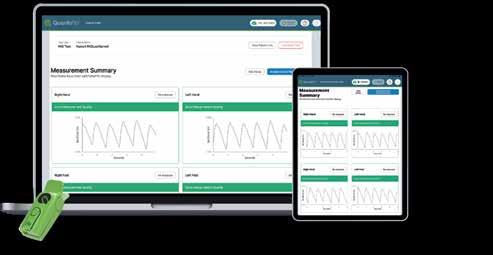



Sillesen, H., & Falk, E. (2011). Peripheral artery disease (PAD) screening in the asymptomatic population: why, how, and who?. Current atherosclerosis reports, 13(5), 390–395. https://doi.org/10.1007/s11883-011-0196-x Diehm, C., Allenberg, J. R., Pittrow, D., Mahn, M., Tepohl, G., Haberl, R. L., Darius, H., Burghaus, I., Trampisch, H. J., & German Epidemiological Trial on Ankle Brachial Index Study Group (2009). Mortality and vascular morbidity in older adults with asymptomatic versus symptomatic peripheral artery disease. Circulation, 120(21), 2053–2061. https://doi.org/10.1161/CIRCULATIONAHA.109.865600
CHEMISTRY ANALYZERS
EASY, INTEGRATED WITH-PATIENT TESTING
I-STAT SYSTEM
From Abbott Point of Care
The handheld i-STAT System offers a broad menu of diagnostic tests at the patient’s side in just minutes. With just a few drops of blood, the i-STAT System delivers real time, lab-accurate results for a wide range of tests, including chemistries, blood gas, coagulation, cardiac markers, and more. Minimize delays and wasted time with on-side tests. Easy, intuitive operation.
For intended use and complete product information, visit pointofcare.abbott.
For in vitro diagnostic use only. This material is intended for a U.S. audience only. i-STAT is a trademark of Abbott. Physician Office Resource i-STAT Product Description — US 3064.REV1 08/20


FULL COMPLEMENT OF CLIA-WAIVED
BLOOD
CHEMISTRY TESTS PICCOLO XPRESS® CHEMISTRY ANALYZER
From Abbott Point of Care
The Piccolo Xpress Chemistry Analyzer provides physician offices with lab-accurate results for a broad range of CLIA-waived general chemistry tests, including metabolic panels, lipids, live, and kidney function, and more with just 100 microliters of blood. Easy to use, the PIccolo Xpress provides results during a patient’s visit, accelerating treatment decisions, increasing efficiency, and supporting patient satisfaction. Automated quality control on every test helps ensure accuracy.


TOXICOLOGY SCREENING SIMPLIFIED ABBOTT’S IMMTOX
270 BENCHTOP ANALYZER NOW WITH 14 ASSAYS CLIA CATEGORIZED AS MODERATE COMPLEXITY
From Abbott
The ImmTox270 benchtop analyzer offers comprehensive toxicology screening solutions for physician offices, treatment centers and independent laboratories.
Broad test menu with over 20 assays to choose from including 14 that are now available as moderately complex.
With complete laboratory solutions from consultation to licensure, and compliance the Abbott Clinical Laboratory Solutions team has you covered.

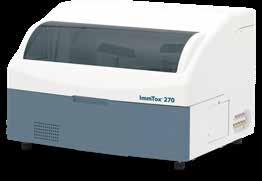
T H E Y A R E I N Y O U R W A I T I N G R O O M R I G
T N O W .
Patients with Peripheral Artery Disease (PAD) who may be facing a heart attack, stroke, amputation, or even death within the next 5 years.

ARTERY DISEASE

(PAD) is an often silent condition where narrowed arteries reduce blood flow to the legs, causing symptoms like leg pain, numbness, and slow-healing wounds
DON’T LET PAD SNEAK UP ON YOU OR THESE PATIENTS.
50% report no symptoms, while those that do attribute their pain to arthritis or “old age”.
I N T R O D U C I N G

N o n - i n v a s i v e , p a t i e n t - f r i e n d l y t e s t .
A C C U R A T E
A c c u r a c y e q u a l o r b e t t e r t h a n D o p p l e r A B I
U s e f u l f o r d i a b e t i c s w i t h c a l c i f i e d a r t e r i e s .
R E I M B U R S A B L E
e m b e r
G r e a t R O I : t h e t y p i c a l i n t e r n i s t h a s 8 0 0 M e d i c a r e p a t i e n t s , p e r A C P .
T e s t i n
l e s s t h a n t w o m o n t h s
C P T 9 3 9 2 3 ( A B I w / e x
$ 1 4 2 / e x a m .

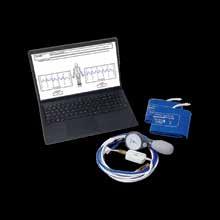
THESE PATIENTS TRUST YOU TO FIND THEIR PAD
before they have a heart attack, stroke, or even die. PAD also leads to significant disability and reduced quality of life


For over 45 years, Newman Medical has been a leader in vascular innovation. The ABI-Q system continues that legacy with fast, accurate results you can trust.
Scan for more info

From Abbott CHEMISTRY
TOXICOLOGY URINE DRUG SCREENING REAGENTS

Prescription drug misuse and illicit drug abuse is a growing public health challenge in this country. Building a test profile that covers highly misused drugs has never been so vital. With over 20 relevant assays to choose from Abbott’s suite of Immunalysis reagents allows you to easily screen for relevant substances. Our complete line of assays, calibrators, and controls enables you to implement an efficient drug screening program in office.
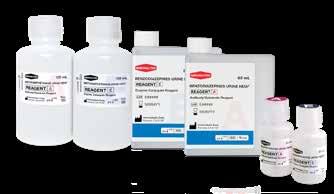
DIAZYME DZ-LITE™ C270 BENCHTOP GENERAL/SPECIAL CHEMISTRIES + DRUG SCREENS
From Carolina Liquid Chemistries
A fully-automated, open system, benchtop clinical chemistry analyzer with throughput up to 270 tests/hour, 36 reagent positions, and 30 sample positions. It features a menu of over 60 CLIA moderate complexity assays, including cancer markers, cardiovascular markers, coagulation markers, diabetic markers, inflammatory markers, liver markers, renal/pancreatic markers, sepsis markers, vitamin markers, photometric electrolytes, and drugs of abuse. To learn more, visit https://www.carolinachemistries.com/products/dz-lite-c270-benchtop-chemistry-analyzer/.
EASYRA® BENCHTOP CHEMISTRIES + DRUGS
From Carolina Liquid Chemistries
When starting a lab, look no further. With a CLIA moderately complex menu of 35 general chemistries and 14 urine drug screens, the EasyRA is well-suited for oncology, rheumatology, and multi-specialty practices needing a benchtop clinical chemistry analyzer. The EasyRA offers photometric throughput of 240+ tests/hr (up to 480 tests/hr with ISE) and STAT samples in under 8 minutes. This all-in-one system is easy to learn and easy to operate.




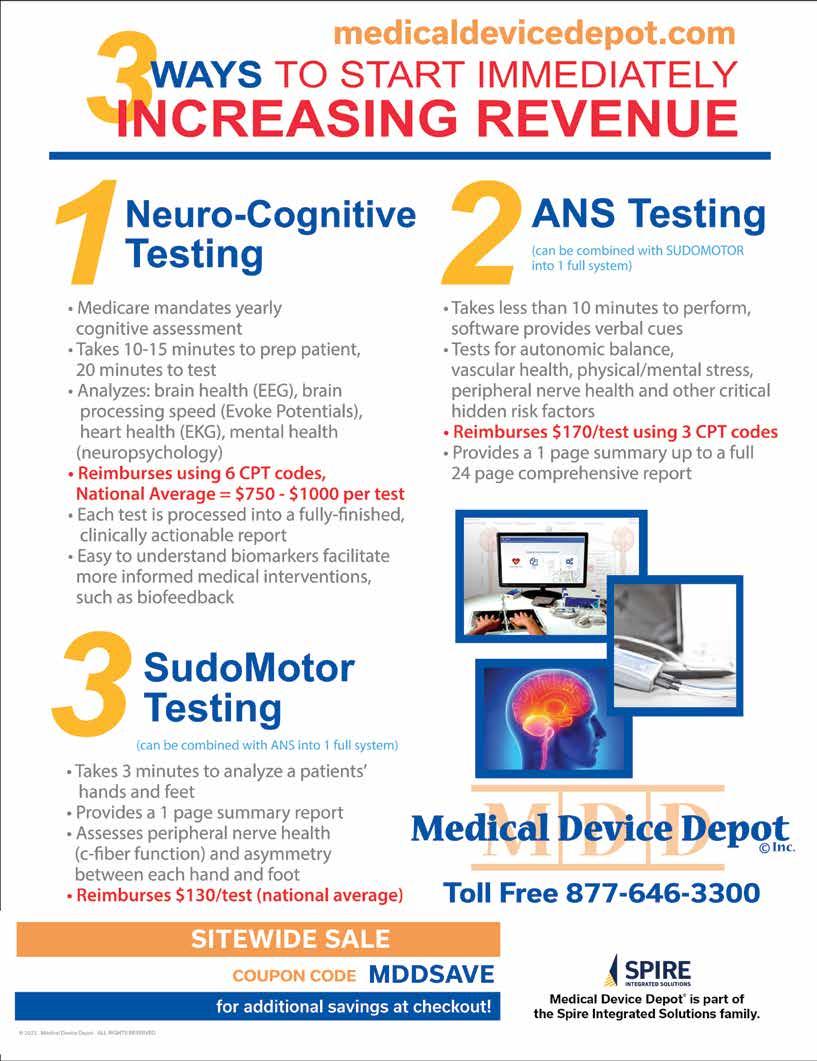

DIABETES/BLOOD GLUCOSE
EARLY DETECTION
AND MANAGEMENT OF CHRONIC
CONDITIONS
WITH DCA VANTAGE® AND CLINITEK STATUS®+ ANALYZERS
From Siemens Healthineers
Siemens Healthineers DCA Vantage® and CLINITEK Status® family of analyzers provide Hemoglobin A1c (HbA1c) and albumin-to-creatinine ratio (ACR) testing at the point of care. Monitor glycemic control in patients with diabetes and screening for kidney disease in patients at-risk, in-office. Enable real-time consultation, eliminating loss to follow-up. Improve the patient experience and overall outcome by providing actionable results in minutes.
CLIA-waived: DCA HbA1c; CLINITEK Microalbumin 2 (ACR) CLIA Moderate Complexity: DCA® Microalbumin/Creatinine (ACR)
QUANTAFLO® PAD
From Semler Scientific

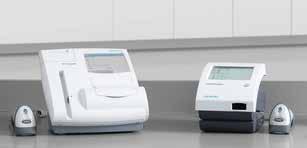

QuantaFlo® PAD is an easy to use, accurate, point of care, non-invasive solution that aids in the early detection of peripheral arterial disease (PAD). This FDA cleared device can be administered by a medical aide in less than 5 minutes. As published in the Journal of Vascular Surgery and the American Journal of Preventive Medicine, QuantaFlo detected undiagnosed PAD in 31.6% of patients +65.1 QuantaFlo is portable and integrates with other technologies and platforms. It is ideal for both home and clinic environments.
1. Smolderen KG, Ameli O, Chaisson CE, Heath K, Mena-Hurtado C. Peripheral Artery Disease Screening in the Community and 1-Year Mortality, Cardiovascular Events, and Adverse Limb Events, AJPM Focus (2022), https://doi.org/10.1016/j.focus.2022.100016

NOVA PRIMARY BLOOD GLUCOSE REFERENCE ANALYZER
From Nova Biomedical
The U.S. FDA has cleared Nova Primary as a blood glucose reference analyzer that fills the need for a new reference analyzer to replace the YSI STAT PLUS 2300 (YSI, Inc., Yellow Springs, OH). Manufacturers of blood glucose measuring devices and clinical diabetes researchers have relied on the YSI 2300 as a reference and correlation analyzer. However, YSI, Inc. no longer supports the analyzer, and its discontinuation has left a critical industry void. With today’s FDA clearance, Nova Primary from Nova Biomedical is now available in the U.S. and worldwide.


Comprehensive toxicology menu now with 14 CLIA 1 categorized moderate complexity assays.

IMMTOX ™ 270 BENCHTOP ANALYZER

Toxicology screening solutions for physician offices, pain management, treatment centers and laboratories testing 200+ patient samples/mo.
MODERATE COMPLEXITY ASSAYS – FDA 510(K) CLEARED
6-acetylmorphine (6-AM Heroin metabolite)
Amphetamine
Barbiturates
Benzodiazepines
Benzoylecgonine (Cocaine metabolite)
Buprenorphine
Cannabinoids (THC)
1. Clinical Laboratory Improvement Amendments (CLIA) / *

EDDP (Methadone metabolite)
Fentanyl*
Methamphetamine
Opiates
Oxycodone
Phencyclidine (PCP)
Tramadol
Scan this QR code to view the ImmTox™ 270 product video

THE CRUCIAL ROLE OF PRIMARY CARE PHYSICIANS IN SCREENING FOR
Colorectal Cancer
BY ADAM IRVING, PHYSICIANS OFFICE RESOURCE STAFF WRITER
Colorectal cancer (CRC) is the third most common cancer diagnosed in both men and women and remains a leading cause of cancer-related deaths worldwide. Early detection through screening significantly improves prognosis and reduces mortality. As primary care physicians (PCPs) play a crucial role in preventive medicine, understanding the available CRC screening options is essential for guiding patients in making informed choices. This article provides an overview of colorectal cancer, risk factors, and the various screening modalities available to detect the disease.
Epidemiology and Risk Factors
CRC primarily affects individuals over 50 years of age, but in recent years, there has been an increase in incidence among younger adults. Risk factors include:
• Age (50 years and older)
• Family history of colorectal cancer or adenomatous polyps
• Personal history of inflammatory bowel disease (ulcerative colitis, Crohn’s disease)
• Genetic syndromes (e.g., Lynch syndrome, familial denomatous polyposis)
• Lifestyle factors (diet high in red and processed meats, obesity, smoking, alcohol consumption and physical inactivity)
Given these risk factors, PCPs should emphasize the importance of screening in at-risk populations and discuss modifiable lifestyle changes that may reduce CRC risk.
Screening Guidelines
The U.S. Preventive Services Task Force (USPSTF) and the American Cancer Society (ACS) recommend CRC screening for average-risk adults starting at age 45. Those with higher risk factors may need earlier and more frequent screening. Various screening methods exist, each with its benefits and limitations.
Screening Methods
There are two main categories of CRC screening tests: stoolbased tests and visual (structural) exams. PCPs should be familiar with these options to help patients select the most appropriate test based on individual risk factors, preferences, and accessibility.
Stool-Based Tests
These non-invasive tests detect blood or DNA markers in stool samples and require no bowel preparation.
1. Fecal Immunochemical Test (FIT)
• Detects hidden blood in the stool from lower gastrointestinal bleeding.
• Recommended annually.
• High sensitivity for detecting CRC but lower for adenomas.
• No dietary or medication restrictions.
2. Guaiac-Based Fecal Occult Blood Test (gFOBT)
• Detects blood in the stool through a chemical reaction.
• Requires annual testing.
• Dietary restrictions (avoiding red meat and certain medications) are necessary.
• Lower sensitivity compared to FIT.
3. Multi-Target Stool DNA Test (mt-sDNA) (e.g., Cologuard®)
• Detects both DNA mutations and occult blood.
• Recommended every three years.
• Higher sensitivity for CRC and advanced adenomas than FIT.
• More expensive than FIT and gFOBT.
Visual (Structural) Exams
These tests allow direct visualization of the colon and rectum and have higher sensitivity for detecting precancerous lesions.
1. Colonoscopy
• Gold standard for CRC screening.
• Recommended every 10 years for average-risk individuals.
• Requires full bowel preparation.
• Allows for polyp removal and biopsy during the procedure.
• Higher cost and risk (perforation, bleeding) compared to non-invasive tests.
2. Flexible Sigmoidoscopy
• Examines the rectum and lower third of the colon.
• Recommended every 5 years, or every 10 years when combined with FIT.
• Less invasive than colonoscopy but does not evaluate the entire colon.
3. CT Colonography (Virtual Colonoscopy)
• Uses computed tomography to create detailed images of the colon.
• Recommended every 5 years.
• Requires bowel preparation but is less invasive than colonos copy.
• Polyps detected require a follow-up colonoscopy for removal.
Choosing the Right Test for Patients
The best CRC screening test is the one that the patient is willing and able to complete. PCPs should discuss the pros and cons of each method while considering the patient’s risk factors, medical history, preferences, and access to healthcare facilities. Key considerations include:
• Average-Risk Individuals: FIT or colonoscopy are the most commonly recommended options.
• High-Risk Individuals: Colonoscopy is preferred due to its ability to detect and remove precancerous lesions.
• Patients Avoiding Invasive Tests: FIT or stool DNA testing may be suitable alternatives.
• Patients with Limited Access to Colonoscopy: Stool-based tests can be useful interim solutions.
Barriers to CRC Screening and Strategies to Improve Uptake
Despite the proven benefits of CRC screening, adherence remains suboptimal due to factors such as:
• Lack of awareness about screening recommendations.
• Fear or discomfort with colonoscopy preparation.
• Concerns over cost and insurance coverage.
• Limited access to healthcare providers or screening facilities.
To improve screening rates, PCPs can:
• Educate patients on the importance of CRC screening and available options.
• Offer multiple screening choices tailored to patient preferences.
• Implement reminder systems for patients due for screening.
• Advocate for policy changes that increase insurance coverage and access to CRC screening.
Primary care physicians play a pivotal role in colorectal cancer prevention and early detection. By understanding the different screening methods and individualizing recommendations based on patient preferences and risk factors, PCPs can help increase screening adherence and ultimately reduce CRC-related morbidity and mortality. Encouraging patients to participate in regular screening remains a key strategy in the fight against colorectal cancer.
STATUS FLU A&B
From LifeSign
Status Flu A & B is an in vitro rapid qualitative test that detects influenza type A and type B directly from nasal swab, nasopharyngeal swab, and nasopharyngeal aspirate/wash specimens obtained from patients with signs and symptoms of respiratory infection. It is intended to aid in the rapid differential diagnosis of Influenza A and B viral infections.
• CLIA waived *Innovative flip design with onboard sample extraction
• Premeasured developer solution capsule for increased accuracy and ease of use
• Flocked nasal swabs for improved patient comfort and superior specimen collection
STATUS COVID-19/FLU A&B PANEL TEST
From LifeSign



A Rapid Immunoassay for the Simultaneous Direct Detection and Differential Diagnosis of SARS-CoV-2, Influenza Type A and Type B Antigen from Anterior Nasal and Nasopharyngeal swab specimens. Infections with these viruses may present similar symptoms. Can you tell them apart? WE CAN!

BIOFIRE SPOTFIRE
From bioMerieux
bioMérieux knows that an evolving world deserves evolved diagnostics. Our latest innovation, the BIOFIRE® SPOTFIRE® Respiratory Solution, is the first FDA-cleared and CLIA-waived COVID-19 testing solution. The BIOFIRE® SPOTFIRE® System is an easyto-use system that runs the BIOFIRE® SPOTFIRE® Respiratory (R) Panel. Benefits of the SPOTFIRE Respiratory Solution include: 15 respiratory targets on 1 PCR test with results in about 15 minutes; minimal benchtop space with vertical scalability up to four modules; easy to use with an intuitive user interface.

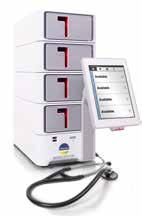
FLU AND RESPIRATORY
ACUCY INFLUENZA A&B TEST
From Sekisui Diagnostics
The Acucy™ Influenza A&B Test is for the rapid, qualitative detection of influenza A and B viral nucleoprotein antigens from both nasal and nasopharyngeal swabs. Utilizing the Acucy™ Reader in either the point-ofcare or laboratory setting, workflow flexibility is achieved with both Read Now and Walk Away features. The combination provides clinicians with standardized and definitive result interpretation.

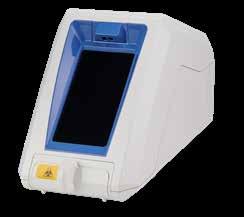
METRIX® COVID-19 TEST – A MOLECULAR LAB ANYWHERE AND EVERYWHERE
From Sekisui Diagnostics
The Metrix® COVID-19 is a novel technology includes clinical claims for symptomatic and asymptomatic individuals, along with dualsample types for nasal or saliva, allowing for an enhanced point-ofcare testing experience. The reader is compact and robust, it’s ideal for professional use in diverse locations, including clinics and mobile health units. It’s a maintenance free device with no calibration step required.


BE PREPARED FOR RESPIRATORY SEASONS WITH THE OSOM® COVID-19 ANTIGEN RAPID TEST
From Sekisui Diagnostics
The OSOM® COVID-19 Antigen Rapid Test is a lateral flow immunoassay that detects the SARS-CoV-2 nucleocapsid protein with a nasal swab in only 15 minutes at the point-of-care. The test is intended to be used by healthcare professionals or operators on patients suspected of COVID-19 within the first 7 days of symptom onset. The clinical performance compares favorably against polymerase chain reaction methodology, with a positive percent agreement of 95.1% and a negative percent agreement of 97%.
OSOM® COVID-19 Antigen Rapid Test has not been FDA cleared or approved. It is authorized by FDA under an EUA for prescription use only. It has been authorized only for the detection of SARS-CoV-2 antigen, not for any other viruses or pathogens and is only authorized for the duration of the declaration that circumstances exist justifying the authorization of emergency use of in vitro diagnostics for detection and/or diagnosis of COVID-19 under Section 564(b)(1) of the Federal Food, Drug, and Cosmetic Act, 21 U.S.C S360bbb-3(b)(1), unless the authorization is terminated or revoked sooner.
4929


HEMATOLOGY
TURN SMALL PLACES INTO SMART SPACES
From Abbott
With reduced budgets, shrinking laboratory space and staffing challenges, many laboratories need a solution that lets them work smarter with less. The CELL-DYN Emerald 22 AL is a full performance, automated optical 5-part differential analyzer that delivers smarter results for small to midsize clinical laboratories.
• Compact Design
• Walkaway Functionality
• Ease Of Use
• Smart Safety Features

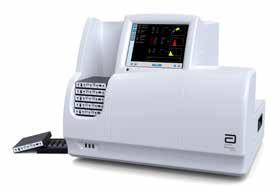
NOW IT’S MORE THANK JUST A BLOOD TEST
From Sysmex
With its simplified operation, the Sysmex XP-300™ is ideal for clinics and physician office labs. It provides a CBC with 17 different parameters, including a 3-part WBC Differential. The XP-300+M combines the accuracy and reliability of a Sysmex CBC with the agility of Medicus Middleware. Features include EMR connectivity, instrument interfaces and a QC module.


STATE-OF-THE-ART BENCHTOP CBC ANALYZER
From Sight Diagnostics 4932

OLO® by Sight Diagnostics® is a state-of-the-art benchtop CBC analyzer that leverages AI, spectroscopy, and digital fluorescent microscopy to provide lab-grade results through full blood sample digitization. OLO offers 19 CBC parameters, including a 5-part white blood cell differential and 14 distinct flags. It handles venous and capillary blood samples with a minimum of 27 µL, and is suitable for children as young as three months. OLO’s unique cartridge-based technology, free from liquid reagents, and its internal controls offer easy maintenance, room-temperature storage, reduced operational overhead, and IQCP- eligibility.


9 TRAVEL DESTINATIONS YOU CAN'T MISS IN 2025

Whether you're craving pristine beaches or vibrant cities, these nine must-visit destinations around the world promise stunning scenery, rich culture, and unforgettable adventures for every type of traveler.
HARBOUR VILLAGE BEACH CLUB
BONAIRE, CARIBBEAN
Tucked away on a private stretch of white sand and palm trees, you will find the iconic Harbour Village Beach Club. An oasis beloved by sun lovers, scuba divers, and seafarers alike. Our boutique Bonaire retreat captures the breezy, barefoot elegance of the Dutch Caribbean, consistently earning the title of “Bonaire's leading hotel” in the World Travel Awards.

SCAN TO LEARN MORE


TURTLE BAY RESORT OAHU, HAWAII
Deeply rooted in the land, the history, and the layered richness of Oahu, at Turtle Bay you’ll find an authentic connection to a place of uncommon natural splendor and the warm, welcoming community within it. Where your days are filled with constant discovery and moments that touch your soul, allowing you to explore the uncommon depths of this remarkable coast.

SCAN TO LEARN MORE
FOUR SEASON ORLANDO AT WALT DISNEY WORLD
ORLANDO, FLORIDA
Discover an elevated escape with the perfect balance of fun and relaxation at our AAA Five Diamond, luxury Orlando Resort. Splash around with the family at Explorer Island water park, or unwind beneath swaying palms at Oasis adult-only pool while we entertain your young ones at our complimentary kids camp. Treat yourself to a soothing, post-park massage at The Spa, then toast to the nightly Walt Disney World® fireworks views over dinner at our Michelin-starred rooftop steakhouse Capa.


SCAN TO LEARN MORE

SECRETS CAP CANA
PUNTA CANA DOMINICAN
REPUBLIC
Secrets Cap Cana Resort & Spa is a sophisticated, adults-only hideaway located in the exclusive gated community of Cap Cana Facing the clear Caribbean Sea along the white sand of the exclusive Juanillo Beach. Secrets Cap Cana Resort & Spa is proud to support the Punta Cana Promise as part of the ongoing commitment to ensure that guests will continue to receive the highest levels of service and security they have come to know and expect from Secrets Cap Cana. The Punta Cana Promise reaffirms the commitment to a set of security standards and safety guidelines in one of the top travel destinations in the Dominican Republic.

SCAN TO LEARN MORE
BALBOA BAY RESORT
NEWPORT BEACH , CALIFORNIA
Balboa Bay Resort is Newport Beach’s premier waterfront retreat offering stunning bay views and sunsets over Balboa Bay’s harbor. It is the #1 Resort in Newport Beach per U.S. News & World Report, and it is rated as a Forbes Four-Star and AAA Four-Diamond resort.



DESOLATION HOTEL
LAKE TAHOE, CALIFONIA
At Desolation Hotel, modern conveniences and eco-luxury commingle with Japanese tranquility and Scandinavian design. Our one-of-a-kind South Lake Tahoe experience inspires adventure and invites tranquility, providing the right space to recharge your battery. Balancing reverence for the past with appreciation for the present, Desolation Hotel nods to the simple days of yesteryear, while modern technology serves as a quiet backbone to the entire resort experience.

THE TAMPA EDITION HOTEL
TAMPA, FLORIDA
Situated within the new 56-acre Water Street Tampa neighborhood, the hotel is home to 172 guest rooms and suites and 7 food and beverage venues, including a signature restaurant, rooftop bar and terrace. The property features a 204 sqm Penthouse Suite, expansive spa, fitness center and over 550 sqm of flexible meeting and events space. Bringing some of the world’s best talents together into one project, the property is designed by acclaimed New York-based architecture practice Morris Adjmi in collaboration with Florida-based firm Nichols Brosch Wurst Wolfe & Associates; with interiors designed by the renowned Roman & Williams, and the whole project underpinned by the creative vision of Ian Schrager and Ian Schrager Company.



FOUR
SEASONS
NASHVILLE, TENNESSEE
Welcome to Four Seasons Hotel Nashville, a luxury hotel located in the heart of downtown’s vibrant SoBro neighborhood. This new social hub is just steps away from the city's iconic music, sports, and entertainment venues. Experience the rhythm of our lively restaurants and event spaces, the tranquility of our Spa, and the stunning views from our rooftop pool overlooking the Cumberland River and Riverfront Park. With the unmatched service of Four Seasons and warm Southern hospitality, we’ll inspire an authentic experience of Music City.

SCAN TO LEARN MORE
FOUR SEASONS LAS VEGAS, NEVADA
As one of the only non-gaming and non-smoking hotels on The Strip, Four Seasons Hotel Las Vegas is a unique oasis in the heart of the action-packed sports and entertainment capital of the world. Offering Five Diamond luxury accommodations, acclaimed dining and a Forbes Five-Star spa, Four Seasons offers the best of both worlds: a resort retreat amid the famous energy of Las Vegas.


SCAN TO LEARN MORE


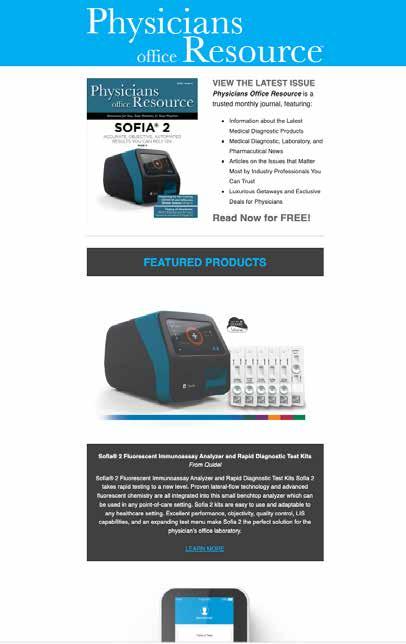



Dream Estate in Whitefish, Montana:
THE ULTIMATE LUXURY SKI RETREAT!
BY JEN HELMLE, MDESCAPES TRAVEL EDITOR
From the moment I arrived at Dream Estate in Whitefish, Montana, I felt like I had stepped into a winter postcard come to life. The crisp alpine air, the towering snow-draped pines, and the breathtaking views of the Rocky Mountains created an atmosphere of pure tranquility. Located just steps away from Whitefish Mountain Resort, this sprawling luxury estate offers the best of both worlds—unparalleled access to worldclass skiing and the comfort of an opulent mountain retreat.
This was not just a ski trip. It was an experience, wrapped in the warmth of a crackling fire, the excitement of deep powder runs, and the charm of one of Montana’s most picturesque mountain towns.
Living in Luxury: Inside the Dream Estate
Sitting at a massive 5,627 square feet, Dream Estate is designed with elegance and comfort in mind. It boasts six beautifully appointed bedrooms, each with its own en-suite bathroom, plush king-sized beds, and floor-to-ceiling windows showcasing the mountain views. The home sleeps up to 22 guests, making it ideal for family gatherings, ski groups, or corporate retreats.

Whitefish Mountain Resort: A Skier’s Dream
The living room is a true showstopper. A grand stone fireplace sits at its heart, surrounded by sumptuous leather seating, inviting you to sink in with a glass of wine after a long day on the slopes. Massive panoramic windows bring the beauty of the outdoors inside, flooding the space with natural light.
At the center of the home, the chef’s kitchen is a dream for any cook—or even those who just love to be around good food. Outfitted with state-of-the-art appliances, ample counter space, and a massive island, it’s the perfect place to whip up a hearty post-ski meal or enjoy a private chef experience (which, by the way, I highly recommend). There’s something special about enjoying a gourmet meal with views of snow-covered peaks just outside your window.
The house is built for entertainment, too. The game room is stacked with a pool table, shuffleboard, ping pong, and a massive 75-inch HD Smart TV with a top-notch Sonos sound system. The private fitness center means you can squeeze in a morning workout before hitting the slopes, while the 320-square-foot heated outdoor patio boasts an 8-seat hot tub—the ultimate après-ski relaxation spot.
And let’s talk about the real luxury here: the ski-in/ski-out access. There’s nothing quite like waking up, gearing up in the dedicated ski room (complete with a 24-pair boot dryer), and gliding right out onto the slopes via Moose Run, which connects seamlessly to Chair 6 at Whitefish Mountain Resort. No shuttles, no fuss…just pure mountain bliss.
If you haven’t skied Whitefish Mountain Resort, you’re in for a treat. This is one of those rare gems that offers world-class skiing without the crowds or sky-high lift ticket prices you’ll find at resorts like Aspen or Vail. Ski Magazine consistently ranks it among the top ski destinations in North America, and after a few runs, I could see why.
Spanning over 3,000 acres of skiable terrain, Whitefish Mountain has something for every level of skier. The front side is known for its long, flowing groomers, perfect for warming up or taking in the stunning views of Glacier National Park in the distance. More advanced skiers will find their thrill in Hellroaring Basin, where tree runs, chutes, and hidden powder stashes provide an exhilarating challenge.
Snow conditions here are consistently excellent, with an average of 300 inches of snowfall per season. The best part? Lift lines are almost nonexistent. Even on a busy day, I never waited more than a few minutes to hop on the chairlift.
Of course, no ski day is complete without a little après-ski indulgence, and Whitefish Mountain delivers on that front too. The Bierstube is a classic mountain dive bar with a laid-back vibe, while Summit House (perched at 6,817 feet) serves up hot toddies with jaw-dropping views. A must-stop is also the Hellroaring Saloon & Eatery. It’s the perfect mid-day stop for a beer and some lunch before heading back out to finish the day. Order the Hellroaring Mountainous Nachos Supreme…you won’t be disappointed!
Exploring Whitefish: Food, Fun & Adventure
If you think Whitefish is only about skiing, think again. Just six miles from the mountain, the town itself is a vibrant mix of old-school Montana charm and modern mountain luxury. Pic-

ture a historic Main Street lined with locally-owned boutiques, cozy coffee shops, and incredible restaurants.
I started my culinary tour of Whitefish at Tupelo Grille, where I had one of the best meals of the trip. Their huckleberry-glazed duck was the perfect balance of sweet and savory, and the Montana-raised bison filet was melt-in-your-mouth good. Another night, I indulged in fresh handmade pasta at Abruzzo Italian Kitchen, followed by a crisp glass of wine by their glowing fireplace.
For a more casual experience, Jalisco Cantina offers incredible upscale Mexican cuisine, and their tequila selection is second to none. After dinner, I headed over to Great Northern Bar & Grill, a lively, no-frills bar with live music, a dance floor, and a legendary burger that locals swear by.
Beyond the food scene, Whitefish offers plenty of winter activities for non-skiers. Spend an afternoon exploring the wilderness by snowmobile, carving through untouched backcountry trails and frozen meadows. Another amazing option is a dog sledding adventure, where you will be pulled through the snowy forest by a team of enthusiastic Alaskan huskies. I’m told both are the kind of experiences that stick with you long after you leave.
If you’re looking for something a little more relaxing, a sleigh ride through a snow-covered valley, complete with a roaring campfire and steaming mugs of hot cocoa, is as close to a winter fairytale as it gets. And of course, no visit to this area is complete without at least a short trip into Glacier National Park, where snow-covered peaks and frozen lakes create a landscape straight out of a dream.
Getting There: Convenient & Scenic
Whitefish feels like a remote escape, but getting here is surprisingly easy. Glacier Park International Airport (FCA) is just 19 miles away, making it a quick 30-minute drive to Dream Estate. With direct flights from major hubs like Denver, Seattle, Chicago, and Los Angeles, it’s one of the most accessible ski destinations in the Rockies.
Once you arrive, getting around is a breeze. Many local accommodations offer shuttle services, and rental cars are widely available. But honestly, with so much within reach, I found myself perfectly content staying close to the mountain and letting the adventure unfold around me.
Final Thoughts: A Mountain Getaway Like No Other
As I packed up my gear and took one last deep breath of that fresh Montana air, I knew this wouldn’t be my last visit to Dream Estate in Whitefish. From the seamless ski-in/ski-out access and luxurious accommodations to the world-class skiing and charming small-town atmosphere, this is a destination that sticks with you.
Whitefish isn’t just a place—it’s an experience. Whether you’re racing down powdery slopes, savoring a gourmet meal, exploring the wild backcountry, or simply soaking in a steaming hot tub under the stars, it’s the kind of trip that leaves you counting down the days until you can return.
Trust me—once you visit Dream Estate, you’ll never look at ski vacations the same way again.

LABORATORY SERVICES
CLIA COMPLIANT, USER-FRIENDLY, COST-EFFECTIVE, ELECTRONIC DOCUMENTATION SYSTEM
From MyInspection
• Meets all CLIA compliance requirements
• No interpretation of CLIA regulations required – includes all policies, procedures, electronic fillable forms stored systematically for easy retrieval
• Remote access – manage individual or multiple labs remotely from your PC, tablet or phone
• Easy to audit and document changes with electronic signatures and dating
• Expert guidance from licensure to your customized documentation system
• Be, stay compliant and inspection ready – reduce time, cost, and stress
PERIPHERAL ARTERIAL DISEASE
QUANTAFLO® PAD
From Semler Scientific



QuantaFlo® PAD is an easy to use, accurate, point of care, non-invasive solution that aids in the early detection of peripheral arterial disease (PAD). This FDA cleared device can be administered by a medical aide in less than 5 minutes. As published in the Journal of Vascular Surgery and the American Journal of Preventive Medicine, QuantaFlo detected undiagnosed PAD in 31.6% of patients +65.1 QuantaFlo is portable and integrates with other technologies and platforms. It is ideal for both home and clinic environments.
1. Smolderen KG, Ameli O, Chaisson CE, Heath K, Mena-Hurtado C. Peripheral Artery Disease Screening in the Community and 1-Year Mortality, Cardiovascular Events, and Adverse Limb Events, AJPM Focus (2022), https://doi.org/10.1016/j.focus.2022.100016

PAD TESTING SYSTEMS IDEAL FOR PRIMARY CARE TO VASCULAR SPECIALISTS
from Newman Medical
Your Patients Trust YOU To Find Their Peripheral Artery Disease
• High-risk patients include those over 65, diabetics, and smokers.
• If left untreated, 25% of patients with PAD will experience a heart attack or stroke within 5 years.
• PAD symptoms are often mistaken for arthritis or old age.
The simpleABI Cuff-Link System is Easy to Learn and Use.
• With a push-button remote, automatic calculations, and waveforms, it’s incredibly user-friendly.
• Reports are straightforward to save and share since the system is PC-based. Outstanding Value and Reimbursements
• The system pays for itself in less than a year with just one test per week.
• Medicare reimbursements vary by exam and location, averaging from $91 to $174.


TOXICOLOGY
TOXICOLOGY SCREENING SIMPLIFIED ABBOTT’S IMMTOX
270 BENCHTOP ANALYZER NOW WITH 14 ASSAYS
CLIA CATEGORIZED AS MODERATE COMPLEXITY
From Abbott
The ImmTox270 benchtop analyzer offers comprehensive toxicology screening solutions for physician offices, treatment centers and independent laboratories.
Broad test menu with over 20 assays to choose from including 14 that are now available as moderately complex.
With complete laboratory solutions from consultation to licensure, and compliance the Abbott Clinical Laboratory Solutions team has you covered.
STREP TESTS

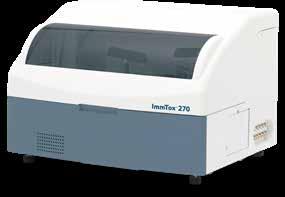
SOFIA® 2 FLUORESCENT IMMUNOASSAY ANALYZER AND RAPID DIAGNOSTIC TEST KITS
From QuidelOrtho

Sofia® 2 Fluorescent Immunoassay Analyzer and Rapid Diagnostic Test Kits Sofia 2 takes rapid testing to a new level. Proven lateral-flow technology and advanced fluorescent chemistry are all integrated into this small benchtop analyzer which can be used in any point-of-care setting. Sofia 2 kits are easy to use and adaptable to any healthcare setting. Excellent performance, objectivity, quality control, LIS capabilities, and an expanding test menu make Sofia 2 the perfect solution for the physician’s office laboratory.

OSOM® ULTRA STREP A TEST
From Sekisui Diagnostics
The OSOM® Ultra Strep A test is a color immunochromatographic assay intended for the qualitative detection of Group A Streptococcus antigen directly from throat swab specimens. Shown to be not statistically different than single swab culture. Sensitivity 95.7% and 100% Specificity. Includes two additional test sticks for External QC. CLIA Waived.


WOMEN'S HEALTH
OSOM® BVBLUE®
From Sekisui Diagnostics
The OSOM® BVBLUE® detects elevated vaginal fluid sialidase activity, an enzyme produced by bacterial pathogens associated with bacterial vaginosis including Gardnerella, Bacteroides, Prevotella and Mobiluncus. OSOM® BVBLUE® is more sensitive than Amsel criteria providing physicians with a more accurate diagnosis to treat and minimize serious health consequences such as early spontaneous preterm births and miscarriage.
OSOM® TRICHOMONAS RAPID TEST
From Sekisui Diagnostics
The OSOM® Trichomonas Rapid Test is intended for the qualitative detection of Trichomonas vaginalis antigens from vaginal swabs or from the saline solution. The OSOM® Trichomonas Rapid Test is a CLIA-waived rapid test available today. OSOM® Trichomonas is more sensitive than wet mount due to the assay being able to detect viable and non-viable organisms which offers significant benefits to the patient and clinician alike.




ULTRA HCG COMBO TEST
From Sekisui Diagnostics
The OSOM® Ultra hCG Combo test is a simple immunoassay for the qualitative detection of human chorionic gonadotropin (hCG) in serum or urine for the early confirmation of pregnancy. Internal studies have confirmed that the OSOM® Ultra hCG Combo test does not have a false negative result from hCG variants providing physicians with a higher level of confidence.


Meet the Quadruple Aim in Diabetes Care with In-office HbA1c and uACR
Better outcomes. Lower costs. Better patient experience. Better clinician experience.

Diabetes management solutions at the point-of-care
Gain insights into your patient’s current status with real-time actionable results.
DCA Vantage® Analyzer
Rapid assessment of glycemic control and kidney health
HbA1c
• CLIA-waived
Albumin-to-creatinine ratio (ACR)
• CLIA Moderate Complexity
CLINITEK Status® Connect System
CLIA-waived analyzer for routine urinalysis, including kidney health
• CLINITEK® Microalbumin 2 Strip (ACR)
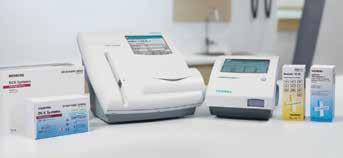
The Prevalence of Diabetes Among U.S. Adults is on the Rise1
Help your patients reverse the trend
Customize your patient consultations to enhance physician-patient partnership toward improved outcomes.
